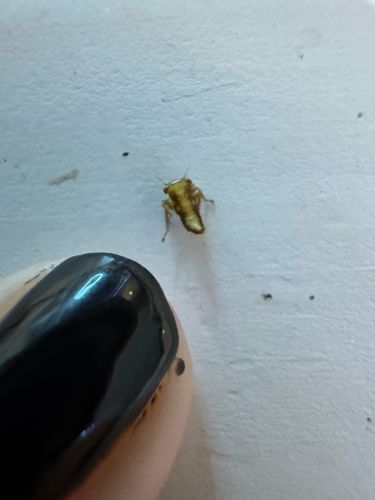Aphid
Scientific Name: Aphididae (a family, not a single species, as specific identification is not possible from the image alone)
Order & Family: Order: Hemiptera, Family: Aphididae
Size: Typically 1-4 mm (0.04-0.16 inches) in length, though some species can be slightly larger.

Natural Habitat
Aphids are found in many terrestrial habitats worldwide, wherever plants thrive. They are common in gardens, agricultural fields, forests, greenhouses, and on houseplants. Their specific habitat depends on the host plant species.
Diet & Feeding
Aphids are phytophagous, meaning they feed on plant sap. They use their piercing-sucking mouthparts to extract phloem sap from various parts of plants, including leaves, stems, buds, and roots.
Behavior Patterns
Aphids reproduce rapidly, often through parthenogenesis (asexual reproduction), leading to large populations quickly. They tend to cluster on new growth and the undersides of leaves. Some species can produce winged forms when colonies become overcrowded or conditions become unfavorable, allowing them to disperse to new hosts. They excrete honeydew, a sugary substance, which can lead to sooty mold growth on plants.
Risks & Benefits
Potential risks include significant damage to crops and ornamental plants due to sap feeding, which can stunt growth, cause leaf curling, and transmit plant viruses. The honeydew they excrete also promotes the growth of black sooty mold, reducing photosynthesis. Aphids generally pose no direct risk to humans (they do not bite or sting). As a benefit to the ecosystem, they are a primary food source for many beneficial insects, such as ladybugs, lacewings, and hoverfly larvae, which helps in pest control.
Identified on: 8/11/2025